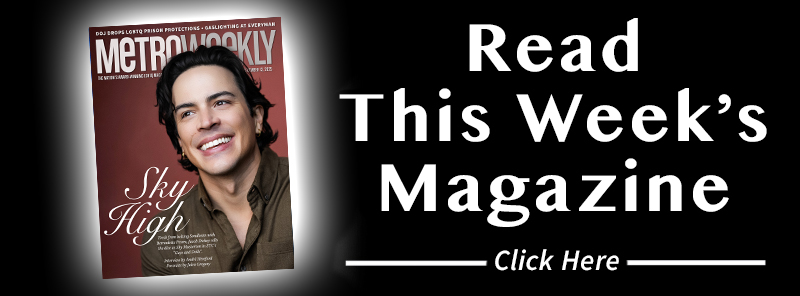Making the #Switch
Our writer ditches Android for Windows Phone 8 and, after "a week of tapping, snapping, glancing and swiping," finds himself torn
Let me preface this by saying I am a pretty hardcore Android fan. The open operating system, the multitude of free apps, the excellent integration of Google’s services — it offers what I need, without making me feel like a sheep because everyone else has one. My current daily driver is the Sony Xperia Z — a flagship device in every sense, with a 13MP camera, 5-inch 1080p screen, quad-core processor and a dustproof and waterproof glass build. It’s light, fast and beautifully made. Why, then, would I want to replace it?
 This is a question I am constantly faced with when watching Microsoft’s “#switch” campaign. Switch to Windows Phone, enjoy its features, lead a happier, more fulfilling life free from Android and iOS. It’s a utopian view of an OS that is barely making an impact in the face of its competition, but given Microsoft’s belief, and my previous, short-lived dalliance with Windows Phone 7, I decided that it was time to put Windows Phone 8 to the test. So, for one week, I #switched to Windows Phone.
This is a question I am constantly faced with when watching Microsoft’s “#switch” campaign. Switch to Windows Phone, enjoy its features, lead a happier, more fulfilling life free from Android and iOS. It’s a utopian view of an OS that is barely making an impact in the face of its competition, but given Microsoft’s belief, and my previous, short-lived dalliance with Windows Phone 7, I decided that it was time to put Windows Phone 8 to the test. So, for one week, I #switched to Windows Phone.
The call to replace my Xperia was answered by Nokia’s Lumia 925. With an aluminum and polycarbonate unibody chassis, 4.5-inch AMOLED screen, 8.7MP Pureview camera and a suite of Nokia apps that aim to offer an enhanced experience over standard Windows Phone devices, it offered the best example of what a Windows Phone could be. Svelte and well-made, it spars with Nokia’s Lumia 1020 for flagship status — offering premium materials and a more professional look over the 1020’s insane camera and better internals.
How did my week with Windows Phone 8 go? After an exhaustive amount of tapping, snapping, glancing and swiping, here are my reasons why you really should — or probably should not — make the jump to Windows Phone.
Glancing Beauty
Windows Phone is famous for one thing: Live Tiles. These flipping, turning, constantly updating hybrids between a widget and an icon are the core to Microsoft’s “glance and go” attitude for WP8. Unlock your phone, and all of your notifications and updates are there, on their respective tiles, waiting for further input or offering detailed information without the need to open the app. In practice? It works. Beautifully. Combined with the numerous little animations and details that garnish Windows Phone’s stark UI, it makes for an incredibly different experience to the open, widget-oriented structure of Android or the banal, icon-driven grids of iOS. I’m a huge fan of Microsoft’s design choices here, with a common typography and style making every app feel like part of the OS — though occasionally the large fonts and splashes of color can leave it feeling a little cartoonish. Simply opening apps, and watching the homescreen flip over and fade, or leaving the Tiles to change and update on screen makes for an intriguing, interesting experience.
I Am (Not) Unique
Where that beauty falters, though, is when it comes to customizing your device. Yes, you can change the color of the default tiles, manipulate them, add new ones and switch the background between black or white, but that’s it. There are no wallpapers on offer here, and you’re limited in the amount of variation you can play with. I tried to make mine as visually appealing and unique as possible, but I know there will be someone else with a very similar setup to mine. The same can be true of iOS — after all, there are only so many ways to stack icons and folders — but Android’s 7 homescreens and numerous icons and widgets always made every user’s device feel unique. Even iOS lets you pick a wallpaper. If Windows 8.1 is giving users the ability to underlay a wallpaper behind its Live Tiles, why can’t Windows Phone users be offered the same courtesy?
 Strike a Pose
Strike a Pose
Microsoft really nailed one feature of Windows Phone — the mandatory camera button. I cannot intimate how much it improves everyday usage. See something you want to snap? Hold the camera button down for a second and the app opens, without the need to unlock your phone or turn on your screen. Framing shots, aiming focus, even holding the device all become easier when you have an actual button to press. I was able to get several great shots just by aiming the phone and pressing the button without looking at the screen — the same can’t always be said of on-screen shutters. Ever tried taking a selfie and missed the button several times? No longer an issue. Combine this with Nokia’s included Smart Cam and Pro Cam apps and photography is enhanced further, with minute control over every aspect, including ISO, shutter delay, focus and white balance, and a range of photo effects and software tricks to make the most of each shot. Windows Phone feels built to take great photos, with even the barebones stock app managing to do a decent processing job of every still. Photography buffs could do well to make the switch — especially for the 41MP Lumia 1020.
I’m So Ronery
Want to stick a filter on those images and share with your friends? Or watch Game of Thrones on the go? Ah. Well…. You may find yourself a little abandoned. Microsoft still has an app problem on Windows Phone. It’s not what it used to be — most of the major apps and games are represented, or have comparable third-party offerings, but some big names are absent. Instagram? A third-party app called 6tag has just launched, but the official app is a no-show and 6tag warns it could stop working should Instagram change its access settings. Vine? Another no-show from an official standpoint. Google+ isn’t there, HBO Go is missing, Flipboard is AWOL, Marvel Comics hasn’t materialized, NBC, ABC and CBS all lack official apps, and Amazon Instant Video hasn’t made an appearance, to name but a few. There are no official Google apps in any capacity, save for the company’s search app. Windows Phone doesn’t even have an official YouTube app, and no third-party app supports video uploads — though Google holds most of the blame here, consistently blocking Microsoft from developing an app and refusing to make their own like they did for iOS and Android. Personally, I didn’t have any major issues — most of the apps I use on a daily basis are available, or have an alternative that works just as well, but if you’re an Insta-addict, you may want to hold onto your Galaxy S4.
Queer as Phone
Rejoice, ’mos, Windows Phone is finally gay-friendly. Well, sort of. Grindr, as used by millions of sex-hungry gay men around the world, has gone from fashionably late to just late — despite pulling an unofficial app and promising the real thing over a year ago. Imagine that — being disappointed by Grindr. Thankfully, gay socialites can now seek refuge in Grindr’s biggest competitor — Scruff. This means I can finally recommend Windows Phone to gay friends who rely on such apps on a daily basis. In the past, no matter how much I wanted to love it, I could never stick with Windows Phone, as Grindr, Scruff et al have become a key component of modern gay life and their absence was sorely felt. No longer. Scruff works just as you’d expect, and kudos toJohnny Scruff and company for ignoring their previous statement that they wouldn’t develop for Windows Phone and pushing the app out. Get WP8 and “Woof” to your heart’s content.
I Could Have Glanced All Night
Battery life is the biggest gripe in modern smartphones. My Xperia has a healthy battery size, but barely lasts a day of moderate usage. Stare at the screen for too long and it drains itself in a few hours. It has been my experience with Android and iOS — the battery just never meets expectations. The Lumia 925? I’m pleasantly surprised. Heavy use will naturally drain it, but a day of emailing, Whatsapp-ing, texting and light social networking saw me plugging it in at the end of the night with charge to spare. An included battery-saver function switches off all non-essential background tasks, wringing every drop from the battery as you near the last 15 percent, and it works. I took it on a night out with 50 percent charge, snapped numerous photos, chatted on Scruff, Facebooked, and otherwise sent texts I’d later regret while sober, and the Lumia still had charge in the morning when I found it in my jeans pocket. Only my Galaxy Note 2, which has a battery the size of Rhode Island, has managed that.
Desperately Seeking Notifications
Glance and go works in theory, but the biggest problem I had during my week was with notifications. Sure, every Live Tile updated to show missed notifications, but why was I missing them? Windows Phone pops a little window, or Toast, at the top of the screen, to tell you when something happens. Not interested just now? Fine, but that’s the last you’ll see of it. Android and iOS both have notification drawers, where every notification lies, ready and waiting, and I missed its inclusion on Windows Phone. Yes, I could return to the home screen and see what apps updates, but it’s not as convenient as pulling down a drawer and tapping into an app. Notifications were also occasionally inconsistent — Facebook chat being the worst culprit. It’s built into the messaging app, but only seemed to receive some messages. Others would send to the official Facebook app, but it doesn’t notify you of chat messages. Conversations can be missed due to the two systems arguing with one another and neither actually delivering a message. Turn on my Xperia, and they’re all there, waiting to be read in Facebook Messenger. It’s a small annoyance, but it shouldn’t exist.
Switch It Up
At the end of the week, I came away impressed with Windows Phone. I deliberately left my Xperia alone and, once I had learned Windows’ quirks and features, I didn’t find myself missing it. Messaging, browsing, Tweeting, playing games, chatting to nearby men-loving men, snapping photos and emailing — all were accomplished with aplomb. Several people asked what I was using, and the Lumia’s good looks helped it gain compliments. Many had never seen a Windows Phone in the flesh and were intrigued by what they saw. All, however, asked me one question: Would I keep it?
Honestly? I’m not sure. The moment I picked up the Xperia, my Google-love came rushing back. Full Gmail, proper YouTube, my widgets, notifications, Google Now – and so many other features I’d forgotten about — all were reminding me why I loved Android. I’d then find myself looking at the Lumia, Live Tiles flipping and changing, and be drawn back to it. It’s just so fluid and beautiful to navigate. And that’s not to mention its exclusive features — Xbox integration with gamerscore in games, Xbox music and video, Office apps, Outlook, the well-designed and varied Bing apps…. I’m genuinely torn.
Ultimately, would I keep this Windows Phone? No. The Lumia 925 is too restrained for my tastes, as well-made as it is. Its big brother, the Lumia 1020, though? Now that’s tempting. In bright yellow, with its 41MP camera, I could seriously see myself making the #switch, and recommending others to do the same.
And that’s something I didn’t think I’d be saying a week ago.
Support Metro Weekly’s Journalism
These are challenging times for news organizations. And yet it’s crucial we stay active and provide vital resources and information to both our local readers and the world. So won’t you please take a moment and consider supporting Metro Weekly with a membership? For as little as $5 a month, you can help ensure Metro Weekly magazine and MetroWeekly.com remain free, viable resources as we provide the best, most diverse, culturally-resonant LGBTQ coverage in both the D.C. region and around the world. Memberships come with exclusive perks and discounts, your own personal digital delivery of each week’s magazine (and an archive), access to our Member's Lounge when it launches this fall, and exclusive members-only items like Metro Weekly Membership Mugs and Tote Bags! Check out all our membership levels here and please join us today!
























